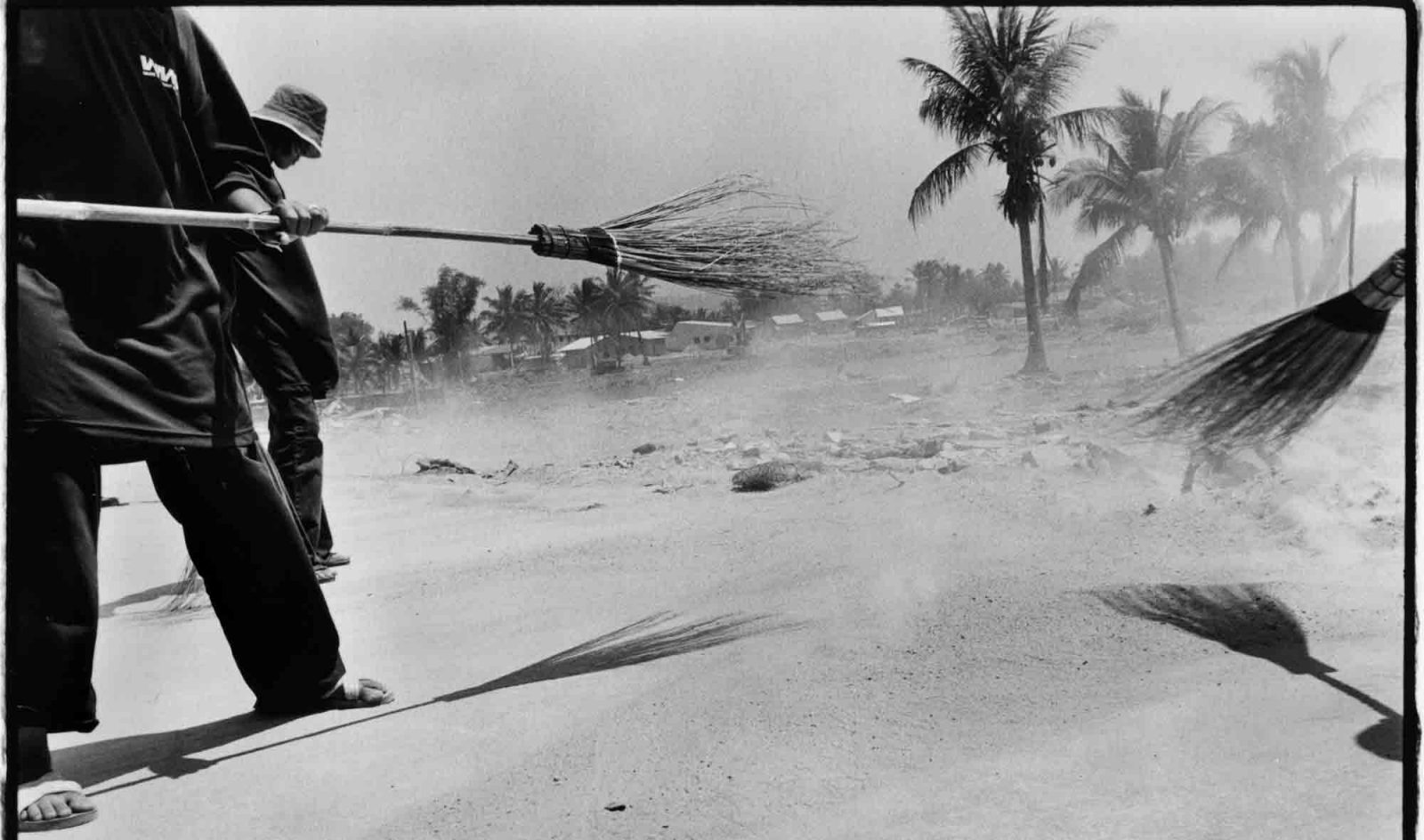On the morning of December 26, 2004, shortly after the sun rose over the Andaman Sea, three killer waves swept over the southwestern shores of Thailand, swallowing—and spitting back out—5,385 people. Thousands more vanished completely in the sea. As this was happening, I was miles up in the air, returning from a pilgrimage in India to northern Thailand, my home for the previous two and a half years. A few hours earlier, I had sat in the Bangkok airport, awaiting a connecting flight, as planeloads of tourists seeking fun, relaxation, and novelty took off for the coastal resorts that now lay in watery ruins. The first images I had of the devastation unrolled on my TV screen later that day in the lakeside town of Phayao, where my husband and I were living during our sabbatical.
There were shots of bikini-clad corpses on beaches and stunned survivors frantically searching among them for loved ones. Video clips showed demolished homes and hotels, capsized fishing boats, crushed cars, and acres of debris. Seawater still gushed from broken storefront windows and down streets and alleys. The Indian Ocean tsunami turned out to be one of the most devastating natural disasters in recorded history, leaving an estimated 227,898 dead, 125,000 injured, 45,752 missing, and 1.69 million displaced over a 22,540-square-mile area. In that idyllic tropical setting, the day after Christmas, who could have imagined that “this will be the day that I die.”
Related: A Village in the Wake of a Wave
The next morning, I got a call from a rabbi friend in Bangkok who had hurled himself into the disaster relief effort. As he described the tragedies unfolding in the wake of the tsunami, it occurred to me that I could provide psychological support to survivors and told him I would fly to the southern beach city of Phuket. At the time, there were just 40 to 50 psychiatrists in all of Thailand and the Phuket International Hospital, inundated with traumatized and wounded survivors, had no designated psychiatric ward. When I arrived, the one resident Thai psychiatrist had barely slept since the tsunami struck a few days earlier, so I offered to cover for him while he rested. “Are you sure?” he asked and proceeded to pile dozens of charts onto my outstretched arms.
For the next two days and nights, I went from room to room, visiting patients and hearing survivors’ stories as nurses and doctors came in and out, delivering painkillers, changing IVs and catheters, and conducting pre- and post-op consultations. Embassy officials were frequent visitors, too, arranging medical transport for wounded tourists who had no clothing, passports, or money. Whether groggy from medication, panicked from trauma, or alert with anticipation, most patients were eager to tell their stories. “We were waiting for our omelets when . . . ” “I was playing with my children when . . . ” “I was riding a motorbike when . . . ” They described terror and chaos—people running, yelling, hurling themselves into trees or holding on to railings they prayed wouldn’t collapse. And then—the realization of who was missing and what was destroyed. I listened carefully to each story, aware of the teller’s need to narrate the details of the experience, with all of its attendant confusion, pain, and disbelief. I could feel each one trying to piece together the events, like a puzzle, one memory at a time.
For the previous 18 months, I had been living at forest monasteries in Thailand, where I had learned to recite the short, straightforward daily reflection on impermanence: “All that is mine, beloved and pleasing, will become otherwise, will become separated from me.” The reflection, similar to ones I practice every Yom Kippur, the Jewish Day of Atonement, helps awaken us to the harsh realities of life but also to its transcendent and eternal qualities. We’re forced to think about where and what our refuge is. What can we rely on? Our worldly pursuits inevitably end in sorrow; acquisitions in dispersion; buildings in destruction; meetings in separation; birth in death. These facts—the irrefutable laws of nature—took on a visceral meaning as I met with those facing sudden, irrevocable loss.
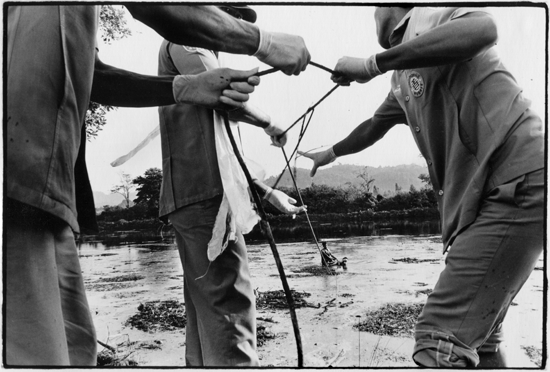
Regardless of their physical condition, nearly everyone I visited was in shock, consumed by grief, uncertainty, and dread. They were reliving the tsunami—the roar of crashing waves, the desperate cries of victims—especially during sleepless nights, as they tossed and turned in their hospital beds. Where were their families and friends? How could they search for them? “What about those searching for me? How will they find me here? Where should I even begin?” I was asked, over and over again.
One morning I looked in on a Dutch man who owned a resort that had been reduced to splintered timber and rubble, and who still hadn’t learned the fate of his family and 30 employees. I had seen him earlier, when he was hysterical with panic and grief. The nurses said he’d barely slept and had refused all offers of sedatives. When I entered his room—curtains drawn against the daylight, television blaring—he stared at me, expressionless. “How are you?” I asked. “I just want to watch television,” he said, and turned back to face the screen. I realized that the best I could offer the survivors I met was to be an equanimous witness to their broken hearts. There was so little to say that could make a difference.
Related: Facing the Wave
After several days in the hospital, I was asked to travel to the resort town of Krabi, where a psychologist was needed to counsel survivors and people attempting to identify the bodies of loved ones. The van that took me to Krabi was packed with large black boxes, like props from a James Bond movie, filled with forensic equipment—microscopes, test tubes, DNA sample kits. We stopped at one of the many beach areas that had become a body collection center, staffed by the Thai Army, doctors, and volunteers. The odor of death greeted us. The beach was still littered with corpses, and people picked through them searching for loved ones, exactly as my husband and I had seen on television. Even elephants joined in the search for bodies washed into the dense forest undergrowth nearby, and headed there with rescue teams where heavy earth-moving machinery couldn’t go.
Body bags were lined up in neat rows in a grassy area close to the beach. Large piles of crumpled corpses lay nearby, decaying and covered with flies and insects. Mourners were standing among them. I recalled the wisdom of the sages: do not comfort the bereaved while their dead lie before them. The shock of grief needs both honor and time. Near the piles of bodies, volunteers were building makeshift coffins, their hammer blows providing a staccato soundtrack.
I was taken to a makeshift morgue housed in a wat [Buddhist monastery]. The floor of the building was covered with about 500 bodies, with more lying outside. Masked workers were spraying the grounds with disinfectant and, until it ran out, placing dry ice around the bodies to reduce the stench. At home in Berkeley, I had volunteered with the Chevra Kadisha, the Jewish society that helps prepare the dead for burial. Nothing of that work had prepared me for this. Just as at the body collection center at the beach, the corpses had been drenched in seawater and exposed to Thailand’s searing heat, leaving most blackened, bloated, and unrecognizable. Some teemed with maggots and worms. Although I was wearing a surgical mask drenched in menthol ointment, the odor was sickening. Inside the morgue, I estimated that the ratio of dead to living might be 50 to one. But there was no way to tell for sure, as the corpses were so densely packed and more were being delivered by the hour.
Among the living were members of an Orthodox Jewish rescue service known as ZAKA (a Hebrew acronym for “identification of victims of disaster”). ZAKA members are trained to identify body parts after suicide bombings, to ensure complete burial in accordance with Jewish law. Clad in face masks and protective overalls reminiscent of astronauts’ suits, the forensic experts—dental, fingerprint, and DNA specialists—had come to Thailand intending to identify missing Israelis (the country is a popular destination for Israeli soldiers on holiday). But the demand for identification of the thousands of dead was so extreme, they ended up collecting physical evidence on every victim they could, regardless of faith, nationality, or race. In the morgue, whenever someone spoke, the sound of the voice punctured the silence and we all listened. At one point, there was a crescendo of excited talking. The team had just identified an Israeli woman by the Hebrew words on the label sewn onto the back of her bra.
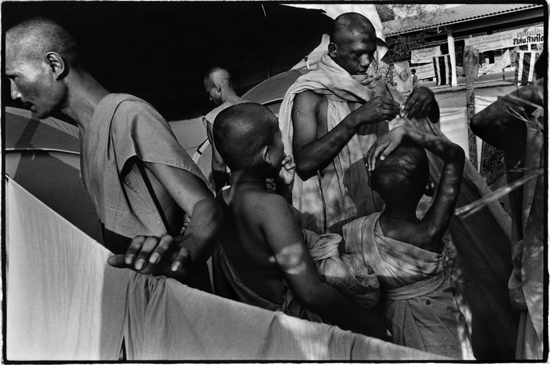
There was no shortage of body parts for the team to collect and match. They were everywhere. Before our eyes, bodies were disintegrating and returning to the elements. The temple had become a massive, open charnel ground meditation, exactly as the Buddha had described it—here a hand bone, there a foot bone, there a tooth, here a skull. Outside the temple-morgue, monks from local monasteries gathered around the clock to chant the traditional funeral verses in Pali: Anicca vata sankhara, uppadavaya-dhammino; uppajjitva nirujjhanti, tesam vupasamo sukho: Conditions are impermanent, rising and falling away; having been born, they all must cease. The stilling of all conditions is true peace.
About 96 percent of Thais are Buddhists. Although many don’t practice meditation, most have strong faith in the Buddha’s teachings. Those who could not find the bodies of loved ones believed that the departed would receive the merit of good deeds performed in life, and also that of the good deeds dedicated to their memory. The Thai way of grieving, from what I could see, was composed, reflecting what is known as jai yen—a cool heart. Mourners appeared to see death as part of life, not as an injustice or a dreadful mistake, even when it was unexpected or swift.
Expressing emotions wasn’t an issue for Westerners, who had jai rawn—a hot heart. Many felt angry and betrayed by the tsunami and by the experts who didn’t detect it in time to transmit warnings. “They should have known! How irresponsible,” they declared. Parents bitterly blamed themselves for not being able to protect their children from death. “I’m a bad parent, it’s my fault,” they confessed, as if they were personally responsible for the natural disaster.
This difference between the two perspectives demonstrates one of the Buddha’s key teachings: our minds are habituated to relate to suffering by resisting it through blame, bitterness, anger, resentment. That resistance is what the Buddha called “the second arrow,” which follows the first arrow, the direct experience of pain. So much additional suffering comes from believing that “things shouldn’t be this way”—when in fact they are that way. Although tragedy and loss feel personal, they are not. Suffering and loss are built into the human condition. I spoke with one local woman in her late twenties who stood beside three stacked caskets containing her young son, daughter, and husband. “Pen tamada, pen tamachat,” she whispered in response to my condolences—“this is natural, this is nature.” Her house and family swept away, she was staying at the nearby monastery of Ajahn Jamnian, a well-known meditation master. Along with a thousand other displaced people, she received food, supplies, and medical attention. Ajahn Jamnian, meanwhile, spent his days and nights walking up and down the beaches strewn with corpses and caskets, chanting and spreading metta and goodwill to the dead and to the living.
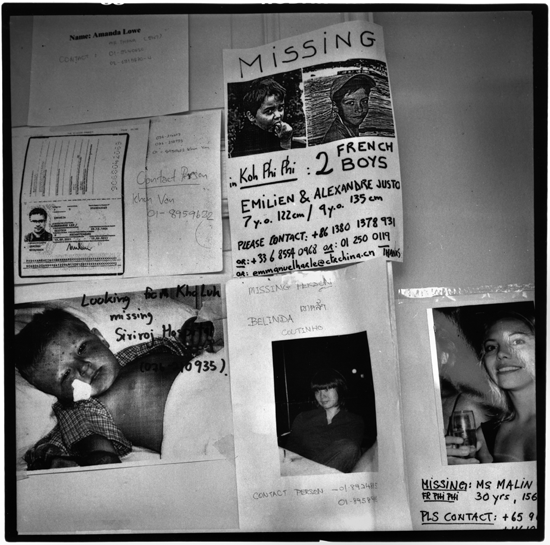
Back at the morgue, I met a mother searching for the body of her 8-year-old daughter, Ploy. The girl had been out playing at the beach with some friends when the first wave struck. While combing through photos of the dead posted on the Internet, the mother thought she recognized her child, a decaying corpse dressed in shorts and a T-shirt, with a three-digit number painted across her chest (part of the identification process set up by the Thai Army). We held hands and tiptoed up and down the aisles of corpses in various stages of decomposition. With just Kleenex over our mouths and noses, we tried to find a cadaver bearing digits that matched the ones written on a scrap of paper in the mother’s hand. We saw bikini-clad bodies crawling with maggots, a toddler’s body infested with worms. But we couldn’t find the child’s numbered body.
Ploy’s mother continued to search while I took a break outside. There were still a few hundred bodies in the morgue we hadn’t yet seen, and hundreds more were being unloaded from pickup trucks. I gazed up into the hot, star-spangled night sky and then at some teenagers and Thai soldiers delivering bagged cadavers. On the trucks, I could see leftover limbs, belonging to no one. My phone rang. It was Ajahn Anan, one of my meditation teachers. “Sabai dee mai—how are you?” he asked. I couldn’t respond. There was no coherent answer to the question. “Mi upekkha. Glap pai chuay kon,” he offered. “Have equanimity. Go back and help people.” I could think only of the fact that I had lost track of the mother looking for Ploy.
At the entry to the morgue, a line of people had formed, numbers in hand, waiting for me to accompany them. I escorted a few inside, but the sight and smell was so overwhelming that they turned and left. Could I assure them that their loved ones would be identified through DNA testing? No one could make that guarantee. I returned to the morgue to talk with the workers. With so many new corpses arriving every hour, was there any order to the bodies on the ground? I noticed that the numbers of the dead were not in sequence—number 473 was next to 112. The only thing I could understand from their replies was that babies and young children were on the left side, wrapped in white, like mummies.
For days, survivors and family members continued to comb through photographs of the deceased and fill out lengthy missing-person forms. There were computer banks at the hospital and outside the morgue. Internet databases were filled with images of documents retrieved from the dead—credit cards, passports, driver’s licenses—and large bags of these items overflowed on a table close to the morgue’s entryway. A kind of camaraderie emerged. Survivors swapped suggestions on how to hasten body identification and retrieval: Start with the numbered photographs of jewelry—fingers with wedding rings, wrists with bracelets, ears with earrings, and necks with necklaces. Then switch to pictures of moles, scars, and tattoos.
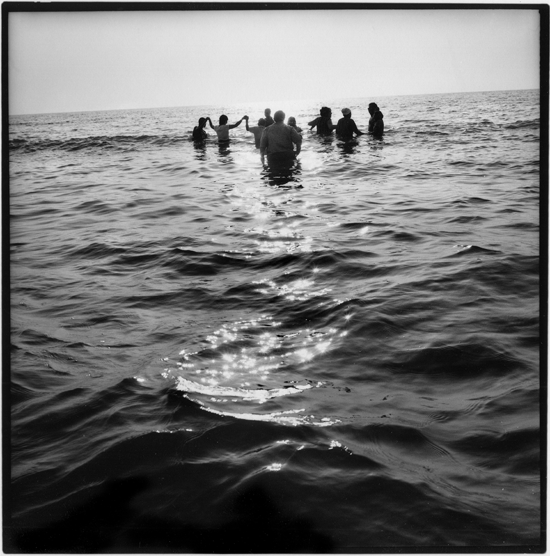
Over the days that followed, I worked with dozens of grieving families, helping identify the corpses of their loved ones, attending cremations, arranging rides to the airport, administering tranquilizers to survivors too distressed to function. I met the parents of a Korean bride who perished during her honeymoon and whose body I helped to lug out of a refrigerated truck and accompany to a monastery for cremation. There were the Scandinavian father and son who left the country ebullient—because they had managed to identify and claim the bodies of a missing wife and daughter. And there was the Thai father searching photo databases for his son, a young monk. Another monk told me that the father was optimistic about finding the body, amid the hundreds of photos of corpses. “A small monk with a shaved head, dressed in robes, is easy to spot,” he explained.
My ability to keep people’s stories and needs in order finally began to crumble. It was time to leave. As I packed my clothes, cosmetics, and notebook, I recalled how the Buddha had instructed his monks to sew their robes from scraps of burial cloth found in charnel grounds: the smell of death would focus their attention on the fragility of life and the certainty of death. But I’d had enough of the stench. My skirts and blouses were saturated with it, and I threw most of my clothes away.
An American news team took me to the airport, which was teeming with tourists from around the globe. In the departure lounge, I recognized several volunteers, but none of us greeted or even acknowledged each other. I took it as a silent agreement to put the past behind us. What else was there to say? Besides, maybe death would take a few days off. That thought dissolved as I headed across the tarmac, toward my plane. Stacks of caskets, interspersed with luggage, rolled up the conveyor belt into the airplane’s cargo, tagged for their final destination.
From Bangkok, I went to visit my teacher Ajahn Anan at his monastery about two hours south of the city. I returned to the kuti (meditation hut) where I had lived for many months, hoping to find some solace. But my mind raced and rambled with memories, images, and stories. I wandered around the monastery, perched on the side of a mountain, hoping to exhaust my body and quiet my thoughts, but when night fell I was still in turmoil. Hoping a book might distract me, I went in search of a volume in English. I entered a large room in the women’s section and was shocked to see bodies littering the floor—but these were alive and engaged in the ordinary act of sleeping. I had become so accustomed to the sight of decomposing corpses that it took me a moment to readjust my perception. I listened to the gentle snores of the women and girls, admired their healthy skin, and appreciated that their heads, limbs, skin, and internal organs were still intact. These living beings would eventually die and decay, just as I and everyone I loved would. I understood that in trying to deny that things are always changing, we lose our sense of the sacredness of life. It’s easy to forget that life and death are part of the natural scheme of things, intrinsic to our lives in an eternally shifting universe.
♦
This essay was adapted from Who by Water: Reflections of a Tsunami Psychologist.
Thank you for subscribing to Tricycle! As a nonprofit, we depend on readers like you to keep Buddhist teachings and practices widely available.
